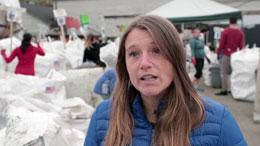Asian nations vow to return trash from Canada

Fed up being the garbage bin for Canada and the western world, Southeast Asian nations are shipping tonnes of waste back to their countries of origin.
The repatriation of the trash shipments comes on the heels of re-export by the Philippines to Canada of 69 containers of plastic waste that had been sent to the Port of Manila by a Canadian firm and its Filipino partner six years ago.
The plastic waste shipment, which arrived in the Philippines on 2013 and 2014 were sent back on May 31, ending a long-running disagreement between Ontario and Manila.
The 69 shipping containers of rotting waste were loaded onto the M/V Bavaria at Subic Bay port before embarking on a 20-day journey to Vancouver, in southwestern Canada. It marked an end to the diplomatic row between the two countries that took off more than five years ago.
Waste from western countries has turned parts of southeast Asia into toxic dumping grounds—and governments have had enough, say several environmental organisations.
Currently, Filipino, Indonesian, and Vietnamese ports are overcrowded with containers of rubbish from the west.
Similarly, in Malaysia, piles of plastic from Europe and the United States are growing at a rapid rate. Earlier this year, a town in Malaysia reportedly transformed into a dumping ground after receiving imports of waste every night, the BBC reports. In response, Malaysia declared on Tuesday 28 May that it was going to send back about 3,300 tonnes of non-recyclable plastic to its origin countries, including Australia, the US, Canada, Saudi Arabia, Japan, Bangladesh, and China.
It wasn’t always like this for the Southeast Asian region. Until just a few years ago, China was one of the biggest dumping grounds for the world’s plastic. But as pollution became a growing concern for Chinese citizens, the government declared in 2017 that it was refusing to receive any more.
“Dumping plastics in developing countries is only the visible tip of a veritable Canadian waste plastic iceberg,” said Chloé Dubois, President, Ocean Legacy, a Canadian non-profit organization that develops and implements plastic pollution emergency response programs worldwide.
Ocean Legacy and other conservancy and environmental groups are now calling on Canada’s environment and health ministers take immediate regulatory action under the Canadian Environmental Protection Act 1999 to address plastic wastes and pollution.
The groups have written a letter to Catherine McKenna, Minister of Environment and Climate Change and Ginette Petitpas Taylor, Minister of Health seeking a meeting
“We see discarded plastic bottles, bottle caps, cigarette butts, fishing nets, buoys, crab trays, ropes and polystyrene all along the coast and in the coastal waters of British Columbia.”
“We can see it, scientists say it is having an impact and other jurisdictions are taking action. We need to do the same and we need to do it now.”
According to a study for Environment and Climate Change Canada, Canada’s plastics recycling rate is 9% . Canada landfills or burns 91% or 2.93 million tonnes of the waste plastic generated each year. Canada’s rivers, lakes and oceans receive an additional 29,000 metric tonnes of plastic litter – the equivalent of 9.7 billion coffee cup lids.
In addition to plastic pollution Canada’s failure to recycle plastics results in over 1.8 million metric tonnes of greenhouse gases as more plastic is made to replace what is lost to landfills, incinerators rivers, lakes and oceans, or what is shipped to unwitting developing nations, said Dubois.









